Let’s dive into the world of alginate, a fascinating biopolymer derived from both seaweed and bacteria.
Where does alginate come from?
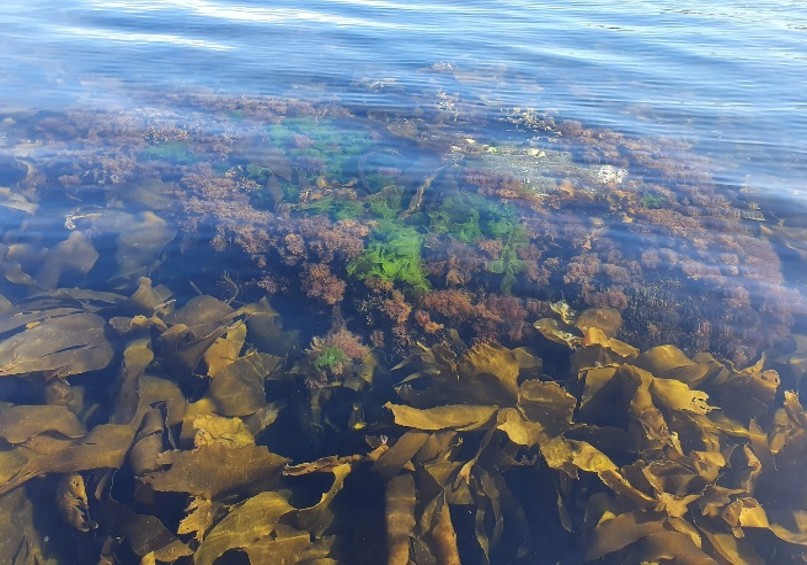
Alginate is naturally found in brown seaweed (Macrocystis pyrifera, Ascophyllum nodosum, Laminaria species) and produced by certain bacteria (Pseudomonas, Azotobacter). In seaweed, alginate helps keep it strong and flexible while holding onto water. In bacteria, it acts like a shield, helping them stick together in groups (biofilms) and protect themselves from harmful conditions.
Alginate sold by companies is mainly extracted from brown seaweed. The process involves harvesting, cleaning, and treating the seaweed with acidic and alkaline solutions to extract alginate, which is then purified and dried. China leads global production of alginate, especially from cultivated seaweed of the species Laminaria japonica. Norway also plays a key role, harvesting around 150,000 tons of seaweed annually, contributing 20% of the global supply. The primary Norwegian source is tangle kelp (Laminaria hyperborea).
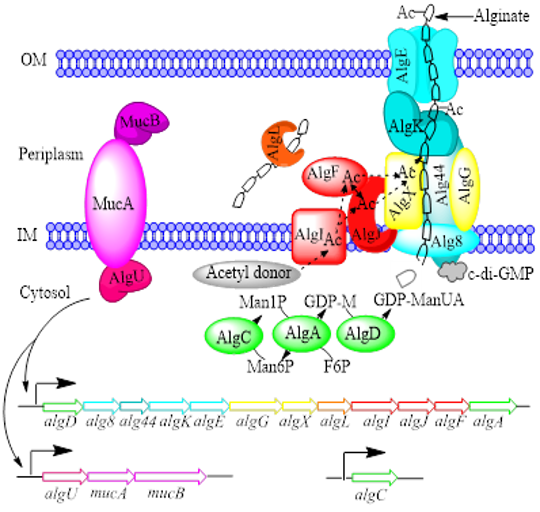


Why is alginate so special?
On a molecular level, alginate consists of the building blocks mannuronic acid (M) and guluronic acid (G), forming long sugar chains that create a flexible, gel-like structure when mixed with water. But what truly sets alginate apart is its ability to form strong, biodegradable films and gels when exposed to calcium ions or other crosslinking chemicals.
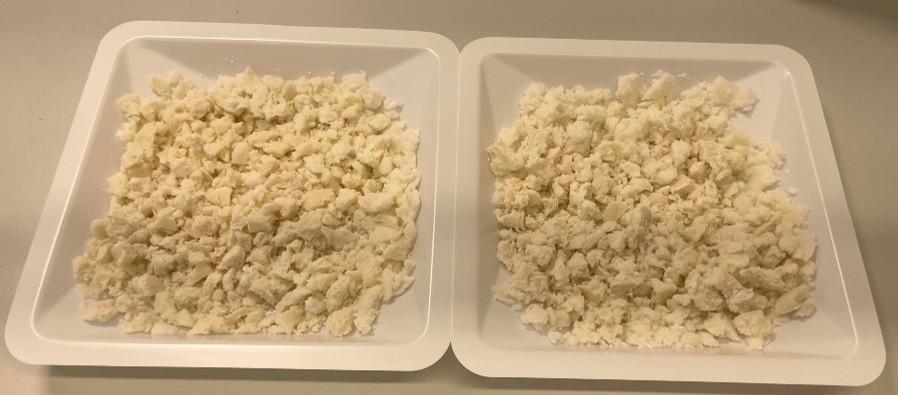
From food to pharma-where is alginate used?
Thanks to its biocompatibility, water-binding properties, and film-forming abilities, alginate is widely used as thickening and stabilizing agent to enhance the texture and consistency of various food products. It’s employed in making gels for products like jellies and gummy candies. Alginate forms gels that encapsulate flavors, vitamins, or probiotics, protecting them and controlling their release in the digestive system. It serves as a carrier in drug formulations, ensuring controlled release and targeted delivery of medications. Alginate is a key component in products like Gaviscon, where it forms a protective barrier on top of stomach contents, helping to alleviate acid reflux. Alginate is also used in creams and masks for its moisturizing and soothing properties.It’s included in shampoos and conditioners to enhance texture and provide a conditioning effect.
The future of alginate in paints and coatings
Paints and coatings have a large range of applications to protect surfaces. However, they are today still mainly composed of fossil oil-based ingredients. There is a big need to find more sustainable alternatives. For example, IKEA utilizes UV-curable coatings in its products primarily to enhance durability, improve surface quality, and increase production efficiency.
These coatings are applied to furniture surfaces to provide a protective layer that resists scratches, impacts, and frequent cleaning, ensuring long-lasting and visually appealing products. Can alginate play a role here and replace some of the fossil-based materials in paints and coatings? How does it perform in UV-curable formulations?
Researchers are actively exploring these questions, and the future of alginate-based coatings looks promising. SINTEF, with over 30 years of experience in alginate research, from both seaweed and bacterial sources, has played a key role in advancing this field and finding new applications for this fascinating and versatile biopolymer.
As a leading partner and coordinator of several EU projects and national research endeavours in European projects, SINTEF collaborates with universities, companies, and other research institutes/other partners to develop new sustainable solutions for the paints and coatings market. Let’s delve deeper into how alginate is transforming coatings, offering sustainable and high-performance solutions across industries. In the following text, we will highlight recent EU and national projects where bacterial alginate, a natural biopolymer, is being used to replace fossil-based ingredients in various industries, including paints, coatings, epoxy compounds, packaging, and personal health care products.
The recently ended PERFECOAT project was an ambitious initiative focused on advancing bio-based coatings for decorative and industrial applications. Funded by the Bio-based Industries Joint Undertaking (BBI JU) under the EU Horizon 2020 research and innovation program, the project aimed to develop wood and decorative coatings with more than 25% bio-based components.
The project, which lasted from May 2021 to April 2024, had a BBI JU/EU contribution of 5 million euros. It aimed to address the environmental challenge of reducing the use of fossil-based materials in paints and coatings. By creating coatings with sustainable bio-based ingredients from sources such as wood residues, and agri-food side streams, PERFECOAT aimed to make a significant environmental impact and help reaching Europe’s climate-neutral ambitions. The project targeted three major markets for coatings: UV-curable furniture coatings, as well as water-based do-it-yourself wood and wall paints.
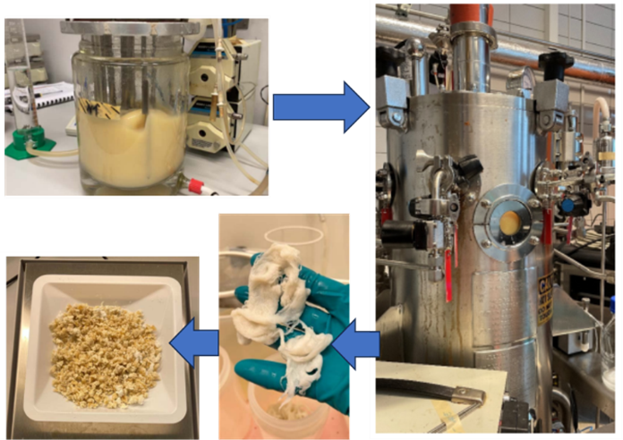
Through PERFECOAT, bacterial alginate produced at SINTEF at a semi-pilot scale was helping to explore more eco-friendly and innovative coating using biopolymers, marking a crucial step toward sustainable industrial practices. By the end of the project, interesting formulations were designed and valuable insights gained that have led to continued research in the other ongoing projects as described below.
The BIONEER project is following up the most promising results from PERFECOAT by focusing on developing bio-based building blocks from sustainably sourced lignocellulosic biomass to replace fossil-based materials in coatings, as well as personal care products. It is funded (7.5 million Euros) by the Circular Bio-based Europe Joint Undertaking (CBE JU) under the European Union’s Horizon 2020 program. Besides coordinating the project, SINTEF plays a key role, among others, by providing bacterial alginate to be tested as a building block material for both target applications. The project aims to scale up production and demonstrate its application in the furniture coating and personal care industries. The BIONEER consortium consists of eight companies, four universities, and several SINTEF departments.
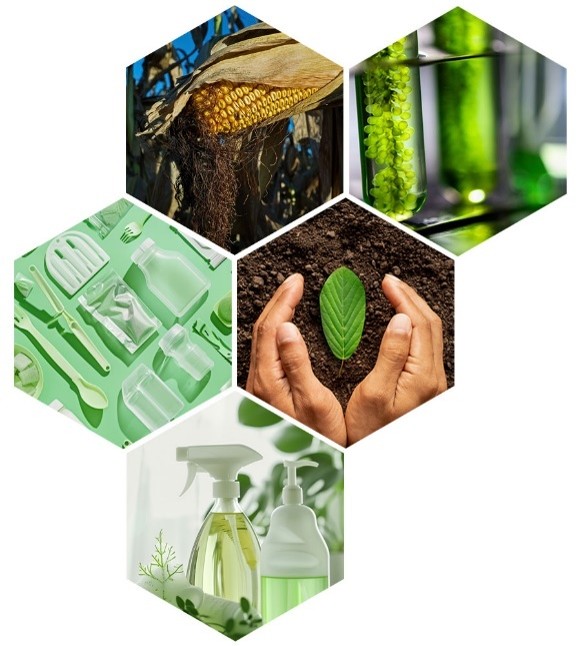
The NORDICOATS project, a collaborative project funded by the Norwegian Research Council in 2023, aims to develop new bio-based epoxy compounds for high-performance coating applications, with a focus on sustainability and environmental friendliness. The project was launched to develop sustainable alternatives to traditional epoxy compounds, which are primarily derived from fossil fuels and often contain hazardous substances like bisphenol A (BPA). BPA is classified as a hazardous chemical in Europe due to its potential to damage fertility and cause cause severe health issues, posing significant health and environmental risks. The NORDICOATS consortium consists of one university, four companies and two research organizations including several SINTEF departments.
Alginate is leading the way in the shift towards sustainable materials, with a wide range of uses across various industries. As we continue to uncover the vast potential of this natural biopolymer, initiatives like PERFECOAT, BIONEER, and NORDICOATS exemplify the commitment to innovation that prioritizes environmental responsibility. By using the special qualities of alginate, we are creating better coatings while helping build a greener future. Exploring alginate shows how nature can offer solutions to today’s challenges, encouraging us to adopt sustainable practices that benefit both the environment and society.















Comments
No comments yet. Be the first to comment!